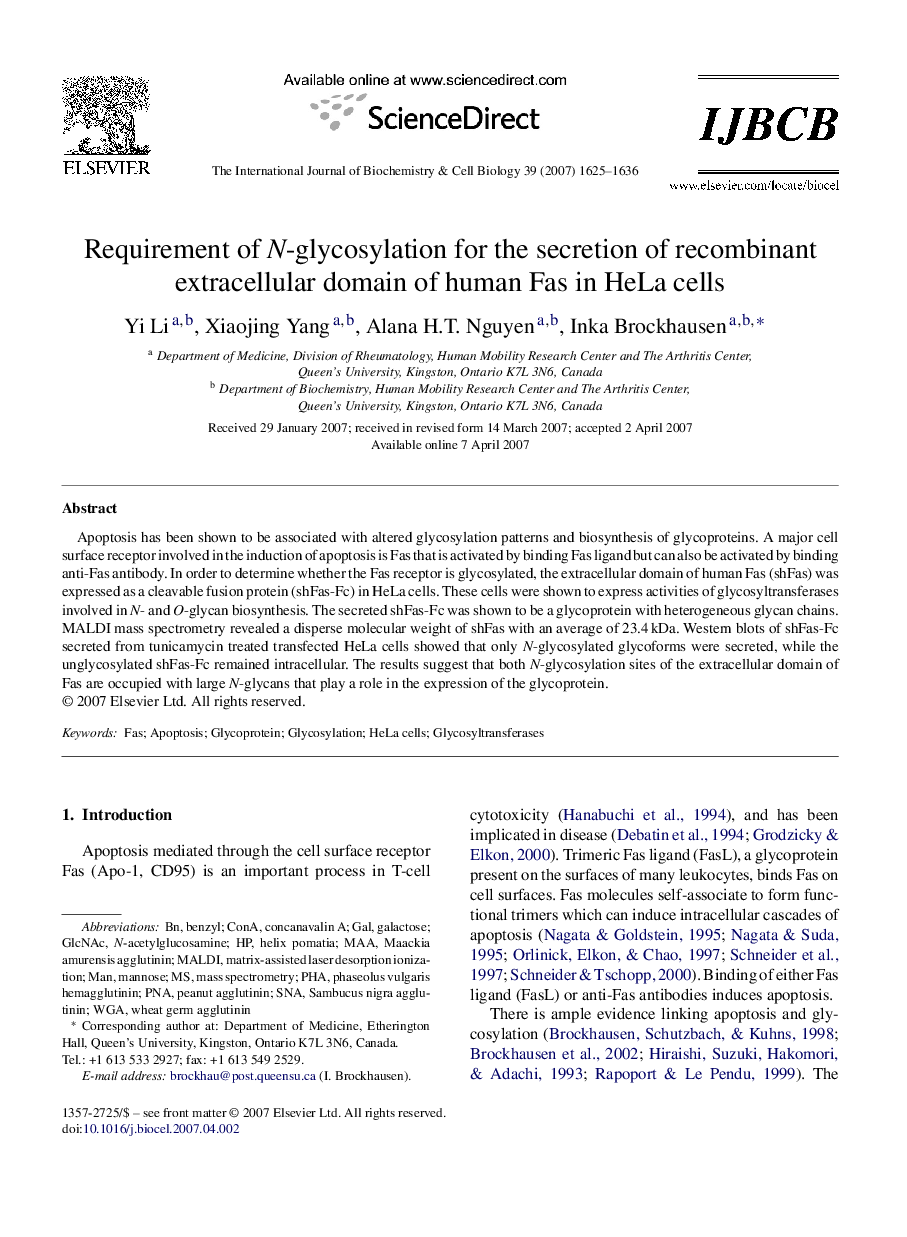| Article ID | Journal | Published Year | Pages | File Type |
|---|---|---|---|---|
| 8326343 | The International Journal of Biochemistry & Cell Biology | 2007 | 12 Pages |
Abstract
Apoptosis has been shown to be associated with altered glycosylation patterns and biosynthesis of glycoproteins. A major cell surface receptor involved in the induction of apoptosis is Fas that is activated by binding Fas ligand but can also be activated by binding anti-Fas antibody. In order to determine whether the Fas receptor is glycosylated, the extracellular domain of human Fas (shFas) was expressed as a cleavable fusion protein (shFas-Fc) in HeLa cells. These cells were shown to express activities of glycosyltransferases involved in N- and O-glycan biosynthesis. The secreted shFas-Fc was shown to be a glycoprotein with heterogeneous glycan chains. MALDI mass spectrometry revealed a disperse molecular weight of shFas with an average of 23.4Â kDa. Western blots of shFas-Fc secreted from tunicamycin treated transfected HeLa cells showed that only N-glycosylated glycoforms were secreted, while the unglycosylated shFas-Fc remained intracellular. The results suggest that both N-glycosylation sites of the extracellular domain of Fas are occupied with large N-glycans that play a role in the expression of the glycoprotein.
Keywords
Helix pomatiaMAASNAWGAConAPNAFASGlcNAcSambucus nigra agglutininPHAConcanavalin AMaackia amurensis agglutininpeanut agglutininBenzylApoptosisHeLa cellsMass spectrometryMALDIMannoseManN-acetylglucosamineGalGalactoseglycosyltransferasesGlycosylationGlycoproteinWheat germ agglutininmatrix-assisted laser desorption ionization
Related Topics
Life Sciences
Biochemistry, Genetics and Molecular Biology
Biochemistry
Authors
Yi Li, Xiaojing Yang, Alana H.T. Nguyen, Inka Brockhausen,
